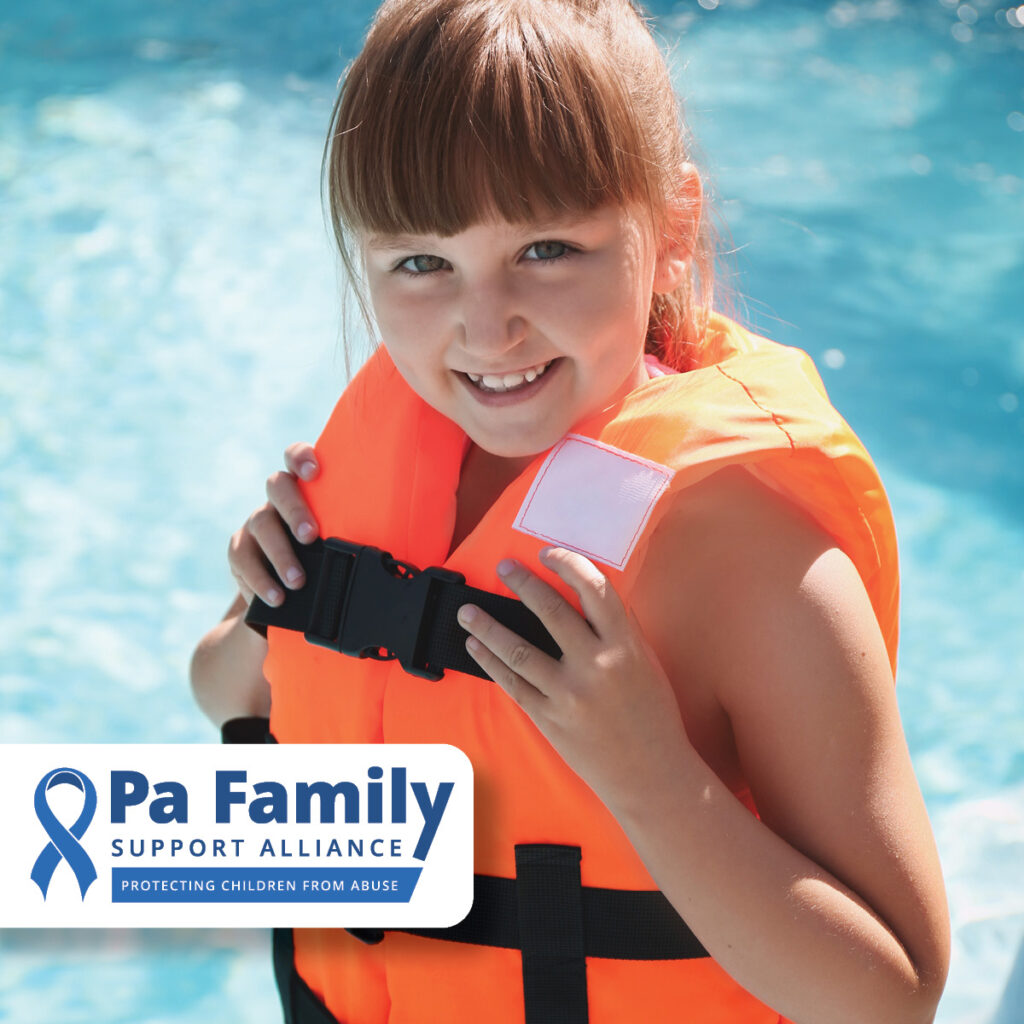#ProtectPAKids: Keep Kids Safe Around Water This Summer

Summer is here, and kids are soaking it up by splashing in pools, playing at lakes, or enjoying time at the beach. Water fun is a big part of childhood, but it comes with serious risks: one out of four drowning deaths in the U.S. every year is a child.
Drowning can happen in the blink of an eye. It’s fast. It’s silent. And it often happens when no one expects a child to be near water; the American Red Cross reports that 69% of children who drowned were not anticipated to be in or near water at the time. That was the case last summer when a 3-year-old in Chester County wandered into a pond and drowned.
This tragedy didn’t have to happen. Here’s how we can prevent child drownings:
Water safety is everyone’s responsibility
- Watch with purpose. An adult should always be watching when young children are near water, even if a lifeguard is present. Consider taking 15-minute shifts with other trusted adults to ensure constant vigilance. And stay sharp by putting down your phone/device so as not to be distracted.
- Check the water first. If a child goes missing, look in pools, ponds, and/or hot tubs first. In an emergency, every second matters.
- Teach swimming skills early. Water competency means being able to enter the water, get a breath, stay afloat, change position, swim a distance, and exit safely. In open water, educate children about currents and undertows.
- Stay away from drains. Broken or missing drain covers can trap hair, jewelry, or limbs, posing a serious drowning risk. Teach children to avoid pool and spa drains.
- Use real safety gear. Young or inexperienced swimmers should wear U.S. Coast Guard-approved life jackets. Avoid water wings, inflatable rings, or arm floaties, as they provide a false sense of security and are not designed for drowning prevention.
- Make sure your child is easy to spot. Blue and green swimsuits can blend into the water, making it harder to spot a child in distress. Instead opt for bright colors like red, orange, or neon shades to improve visibility.
If you have a pool or hot tub at home …
Most young children who drown do so at home. You can help change that:
- Install secure barriers. A fence at least four feet high should surround the pool on all sides, with a self-closing, self-latching gate that is out of reach for children.
- Lock up entry points. Remove or secure ladders, steps, and any objects that could be used to climb into the pool unsupervised.
- Use alarms and covers. Door alarms and properly secured pool covers add an extra layer of protection.
- Set and enforce poolside rules. Teach kids that running, diving, or being near the water without an adult is not allowed.
Swimming is a life skill
Knowing how to swim can make all the difference. Swimming lessons help reduce drowning risk and build up a child’s confidence. Many organizations offer free or low-cost swim lessons, including your local YMCAs, USA Swimming chapters, and Parks and Recreation Departments. The American Red Cross also provides online water safety courses for kids in kindergarten through 5th grade.
Let’s keep our kids safe this summer
No child should die from something we can prevent. With a little planning, we can make water fun and safe by recognizing we all have a role to play. For more tips and resources, visit Poolsafely.gov and/or Redcross.org.
Leave a Reply
You must be logged in to post a comment.
13 Comments